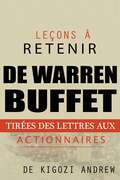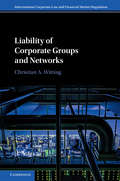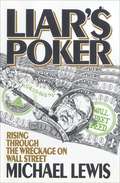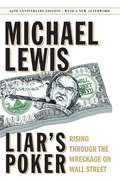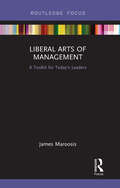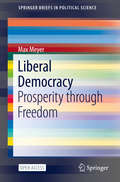- Table View
- List View
Lexar Media: The Digital Photography Company?
by Mary Tripsas Emily ThompsonExamines growth options for a start-up that has parlayed its core technology in flash memory controllers into a rapidly growing position in the emerging digital photography industry. The new CEO must decide whether LexarMedia should maintain its identity as a digital photography company and pursue market-driven growth by extending its photography presence, or pursue technology-driven growth by applying Lexar's technology in emerging markets such as USB flash drives and MP3 players. Key learnings include: managing new industry creation, managing start-up growth, and the role of firm identity in guiding strategy.
Lexon Corp. (A)
by Lynn Sharp PaineA general manager at Lexon Computer Corp. must decide whether interception and surveillance of employees' e-mail is acceptable company practice, and whether to follow the advice of his computer operations manager who wants to fire the person who complained that the practice violates employees' privacy. The case introduces the topic of employee privacy in the electronic communications environment and potential conflicts between employees' privacy interest and employers' property interests. This case series permits students to compare and contrast the perspectives and modes of reasoning of managers, judges, and policy-makers as they approach the question of employee privacy in the electronic work environment.
Lexoo: Building a Long-Lasting Platform
by Elena Corsi Chiara FarronatoLexoo, a UK-based online marketplace for legal services, was facing the strategic choice of how to grow from early start-up to mature platform. Daniel van Binsbergen, Lexoo's CEO, and web developer Chris O'Sullivan, CTO, had set up Lexoo to help Small and Medium-Sized Enterprises (SMEs) to find legal advice at low prices. At the time of the case in 2018, Lexoo had just started attracting larger companies in need of specialized legal advice as new customers. Larger companies had higher value and more frequent needs. Lexoo could become their "go-to" place across a broad range of legal services. Nevertheless, larger companies also required a more personalized approach and were more difficult to acquire than SMEs. Van Binsbergen and O'Sullivan were debating whether Lexoo should diversify to serve both SMEs and larger companies, or whether to pivot their focus toward larger companies altogether.
Lexoo: Building a Long-Lasting Platform (Abridged)
by Elena Corsi Chiara FarronatoLexoo, a UK-based online marketplace for legal services, was facing the strategic choice of how to grow from early start-up to mature platform. Daniel van Binsbergen, Lexoo's CEO, and web developer Chris O'Sullivan, CTO, had set up Lexoo to help Small and Medium-Sized Enterprises (SMEs) to find legal advice at low prices. At the time of the case in 2018, Lexoo had just started attracting larger companies in need of specialized legal advice as new customers. Larger companies had higher value and more frequent needs. Lexoo could become their "go-to" place across a broad range of legal services. Nevertheless, larger companies also required a more personalized approach and were more difficult to acquire than SMEs. Van Binsbergen and O'Sullivan were debating whether Lexoo should diversify to serve both SMEs and larger companies, or whether to pivot their focus toward larger companies altogether.
Lexus
by Chester C. Dawson IIIA behind-the-scenes look at Lexus's surprising twenty-year success story--in a revised new edition In the 1980s, German brands BMW and Mercedes-Benz dominated the luxury car market and had little reason to fear competition from Japan. But in 1989, Toyota entered the market with the Lexus LS 400, a car that could compete with the Germans in every category but price--it was US$30,000 cheaper. Within two years, Lexus had overtaken Mercedes-Benz in the United States and made a stunning success of Toyota's brave foray into the global luxury market. Lexus: The Relentless Pursuit reveals why Toyota decided to take on the German automakers and how the new brand won praise and success for its unparalleled quality, unforgettable advertising, and unprecedented customer service. From the first boardroom planning session to Lexus's entry into the mega-luxury supercar market, this is the complete and compelling story of one of the world's most admired brands. Includes a new Foreword by legendary designer Erwin Lui, an Afterword with updates since the first edition, and a new Coda by leading Japanese automotive journalist Hisao Inoue Covers the racetrack triumph--and tragedy--behind the new US$375,000 Lexus LFA supercar Offers important business lessons for brand managers and executives For car enthusiasts, business leaders, and anyone interested in branding and marketing, Lexus: The Relentless Pursuit offers an amazing story of excellence and innovation in the automotive industry.
Lezioni di imprenditoria da Bill Gates
by Stefano Vazzola Michael WinicottBill Gates è un'icona del mondo moderno. È d'ispirazione per i giovani e un monito per gli anziani. Ha raggiunto vette di successo e gloria che solo pochi sono riusciti a ottenere nelle loro vite. Vale davvero la pena leggere e imparare dalla storia della sua vita. Lezioni di imprenditoria da Bill Gates è un'opera che vi illustrerà la storia della vita di Bill Gates da una prospettiva diversa: le lezioni che ha imparato nella vita. Lezioni di imprenditoria da Bill Gates vi farà proseguire trepidanti nel racconto e resterà con voi anche dopo avere concluso la lettura. Vi renderà persone migliori mentre imparate passo dopo passo gli insegnamenti della vita di Bill Gates. Quando vi troverete di fronte a un problema simile nella vostra vita, saprete come farvi fronte e superare ciò che sembrava un ostacolo insormontabile. Allora siete pronti a imparare dalla vita di Bill Gates? Vi interessa apprendere nozioni commerciali e di imprenditoria? E anche più importante, siete pronti a imparare qualcosa sulla vita? Immergetevi nella lettura di Lezioni di imprenditoria da Bill Gates e iniziate subito a imparare!
Leçons à retenir des lettres aux actionnaires de Warren Buffet
by Laure Valentin Kigozi AndrewCet ouvrage éducatif présente plusieurs leçons tirées des lettres de Warren Buffet à ses actionnaires. Les leçons de ce livre concernent tous les types d'investisseurs, les étudiants en commerce de tous niveaux, les responsables de société ainsi que toutes les personnes intéressées par le sujet. Les leçons reprennent les conseils de Warren sur l'investissement (les titres et valeurs), les affaires et l'organisation idéale d'une société (sa structure). Si vous cherchez un résumé de tous les conseils en investissement pleins de sagesse que Warren Buffet a écrits pour ses actionnaires au fil des ans, ce livre est fait pour vous. Si vous cherchez un rapide aperçu instructif, ce livre est fait pour vous. J'espère que cet ouvrage vous donnera un meilleur point de vue sur l'investissement d'excellence et la gestion d'entreprise.
Li & Fung (A): Beyond
by Michael Y. Yoshino Anthony St. GeorgeIn early 1998, William and Victor Fung had to review their business, the Li & Fung Group, to plan for the next three years. Examines strategic and organizational issues including company culture, international expansion, and venture capital projects. A rewritten version of an earlier case.
Li & Fung (Trading) Ltd.
by Gary W. Loveman Jamie O'ConnellLi & Fung, one of the largest export trading companies in Asia, works primarily as an agent to connect U.S. and European manufacturers and retailers of nondurable, mass-market consumer goods with suppliers located all over East Asia who manufacture products according customer designs. Li & Fung's network of 2,000 suppliers in over a dozen countries is one of its most important competitive assets. This network consists of relationships with suppliers and knowledge of their capabilities and strengths. The network provides a number of benefits to customers, the most important being a wide variety of manufacturing options that differ by price, quality, and delivery time. Li & Fung's trading operations are organized into largely-independent, customer-focused divisions aided by regional branch offices. Its internal structure and incentives (especially compensation) are designed to motivate staff to customize service to each customer and to use the entire network to place each customer order with the supplier that most closely fits customer requirements. This design is especially important because of trading's low margins.
Li & Fung 2006
by William C. Kirby F. Warren Mcfarlan Tracy Yuen MantyDescribes the opportunities and strategy facing one of the most innovative global supply-chain companies, and the strategy it has chosen to deal with the expanding demand for its services. Li & Fung links thousands of factories in India, China, and elsewhere to nearly a thousand large retailers, primarily in the U.S. and Europe. It basically does the supply-chain job faster and more accurately with the aid of a sophisticated information system than anyone else.
Li & Fung 2012
by F. Warren Mcfarlan Michael Shih-ta Chen Keith Chi-ho WongMidway through its current three-year plan, Li & Fung stop to assess the path it is taking in extending its distribution network business in Asia.
Li Ka-Shing and the Growth of Cheung Kong
by Nitin Nohria Anthony J. Mayo Mark BensonEvents in the history of Cheung Kong's growth reveal how Li Ka-Shing applied his skills as a "first-class noticer" to complex political and socioeconomic environments. While Li's determination to succeed is legendary, so are his skills in reading and responding to the policies and norms of the People's Republic of China, British colonial Hong Kong, and the post-World War II international system. Since Li became the taipan of Hutchison Whampoa in the late 1970s, he has adjusted his ownership shares in a vast portfolio of businesses-including ports, energy, real estate, retail, telecommunications, and new media. Illustrates how Li applied his business acumen and his ability as a first-class noticer to decisions about raising or lowering his stake in these businesses, and whether to acquire new ones. After starting Cheung Kong Inc. in 1950, at age 21, Li built upon his knowledge and contacts in the plastics industry to become Hong Kong's King of Plastic Flowers. In the 1960s, amid political turmoil and labor unrest on both the mainland and in colonial Hong Kong, Li purchased rights to properties on Hong Kong island that were selling at distressed rates. Li's successes in industry and real estate continued, and he cultivated contacts and built a strong reputation that set the stage for his purchase of the hong Hutchinson Whampoa, thereby becoming the first Chinese taipan. As taipan, Li reorganized and reallocated his various financial holdings in the 1980s and 1990s as conditions were in flux due to the Westernization of China after Deng Xiaoping succeeded Mao Zedong, and amid concerns about the transfer of Hong Kong from Britain back to China in 1997.
Li Ning--Anything is Possible
by Luc WathieuA leading sporting goods company in China competes aggressively against global brands Nike and Adidas, with marketing strategies adapted to geographic segments. In the main cities, where competition takes place at a very conceptual level, Li Ning has chosen to adopt a very controversial "oriental theme" for its brand, while becoming at the same time a major sponsor of international athletes of the highest caliber.
Liabilities and Time
by William J. Bruns Jr.An introduction to accounting for liabilities. Both current liabilities and long-term debts are described, and illustrations of bond interest calculations and financial reporting formats are included.
Liability Management at General Motors
by Peter TufanoAn analyst at General Motors charged with managing the structure of the automaker's debt must decide whether and how to modify the interest rate exposure of the firm's most recent debt offering. The analyst must take into consideration GM's liability management policy guidelines, the firm's existing interest rate exposure, his expectations of interest rates, and the wide range of interest rate products available. He must decide whether to leave the fixed-rate instrument unchanged or to enter into a swap, cap, interest rate option, or swap option transaction.
Liability Reporting
by Paul M. Healy Preeti ChoudharyBy examining key criteria for recognizing a liability, this case explores liability recognition in straightforward situations and then examines the most difficult reporting issues in recording liabilities. These often arise when: 1) uncertainty arises about whether an obligation has been incurred; or 2) measuring the value of the obligation is difficult.
Liability of Corporate Groups and Networks (International Corporate Law and Financial Market Regulation)
by Christian A. WittingWhat happens when a corporate subsidiary or network company is unable to pay personal injury victims in full? This book sets out to tackle the 'insolvent entity problem', especially as it arises in cases of mass wrongdoing such as those involving asbestos exposure and defective pharmaceuticals. After discussing the nature of corporate groups and networks from the perspectives of business history, organisation studies, and social theory, the book assesses a range of rules and proposed rules for extending liability for personal injuries beyond insolvent entities. New proposals are put for an exception to the rule of limited liability and for the development of a flexible new tort based on conspiracy that encompasses not only control-based relationships but also horizontal coordination between companies. The book concludes with a general discussion of lessons learned from debates about extended liability and provides guidelines for the development of new liability rules. Features a detailed proposal for the development of a statutory exception to limited liability applicable in cases of personal injury. Proposes development of the common law of conspiracy so as to create a new remedy where companies are in commercial agreements with another which is engaged in objectively reckless conduct. Assesses the law on group and network liability in leading common law jurisdictions to provide a better understanding of what gives corporate groups and networks their cohesion and why the law should be prepared to extend liability beyond the insolvent entity.
Liability-Driven Investment: From Analogue to Digital, Pensions to Robo-Advice (Wiley Finance)
by Dan Tammas-HastingsUnderstand the investment template that dominates the pension industry Liability-Driven Investment is the practitioner’s guide to this increasingly popular investment template. Already the dominant framework for pension schemes in Europe and the UK, the LDI market is expected to grow significantly with the shift from Defined Benefit to Defined Contribution, and then into Digital Asset Management — or Robo-Advice. With an aging population and significant under-saving globally, more and more finance professionals will need to know how to work within and around the LDI framework; this book provides clear explanations for the framework’s usefulness and growing popularity to help practitioners find their bearings in and around the LDI space. The ultimate goal of LDI is to move beyond simple asset value maximisation and ensure that investors have sufficient funds to pay liabilities. This informative guide digs into that basic premise to show the various mechanisms, guidelines and practices that make up the framework’s “working parts.” Discover the optimal investment strategies in multiple assets classes Understand the key characteristics of the instruments used, including bonds, interest rate derivatives, and inflation linked products Learn why pension companies and individual investors are moving toward LDI Explore the ways in which the explosive growth of Robo-Advice will change retail investment Finance professionals have long been accustomed to shifting landscapes — it is taken as a given that prevailing thought and attendant practices will change over time — but the rapid expansion of LDI has taken many by surprise. Having already been established as the dominant framework for pensions, it is clear that the emphasis on LDI will only continue to grow. Liability-Driven Investment tells you what you need to know in order to work effectively with LDI.
Liar's Poker: Rising Through The Wreckage On Wall Street (Hodder Great Reads Ser. #10)
by Michael LewisThe time was the 1980s. The place was Wall Street. The game was called Liar's Poker. Michael Lewis was fresh out of Princeton and the London School of Economics when he landed a job at Salomon Brothers, one of Wall Street's premier investment firms. During the next three years, Lewis rose from callow trainee to bond salesman, raking in millions for the firm and cashing in on a modern-day gold rush. Liar's Poker is the culmination of those heady, frenzied years--a behind-the-scenes look at a unique and turbulent time in American business. From the frat-boy camaraderie of the forty-first-floor trading room to the killer instinct that made ambitious young men gamble everything on a high-stakes game of bluffing and deception, here is Michael Lewis's knowing and hilarious insider's account of an unprecedented era of greed, gluttony, and outrageous fortune.
Liar's Poker: Rising Through The Wreckage on Wall Street
by Michael LewisIn this shrewd and wickedly funny book, Michael Lewis describes an astonishing era and his own rake's progress through a powerful investment bank. From an unlikely beginning (art history at Princeton?) he rose in two short years from Salomon Brothers trainee to Geek (the lowest form of life on the trading floor) to Big Swinging Dick, the most dangerous beast in the jungle, a bond salesman who could turn over millions of dollars' worth of doubtful bonds with just one call. With the eye and ear of a born storyteller, Michael Lewis shows us how things really worked on Wall Street. In the Salomon training program a roomful of aspirants is stunned speechless by the vitriolic profanity of the Human Piranha; out on the trading floor, bond traders throw telephones at the heads of underlings and Salomon chairman Gutfreund challenges his chief trader to a hand of liar's poker for one million dollars; around the world in London, Tokyo, and New York, bright young men like Michael Lewis, connected by telephones and computer terminals, swap gross jokes and find retail buyers for the staggering debt of individual companies or whole countries. The bond traders, wearing greed and ambition and badges of honor, might well have swaggered straight from the pages of Bonfire of the Vanities . But for all their outrageous behavior, they were in fact presiding over enormous changes in the world economy. Lewis's job, simply described, was to transfer money, in the form of bonds, from those outside America who saved to those inside America who consumed. In doing so, he generated tens of millions of dollars for Salomon Brothers, and earned for himself a ringside seat on the greatest financial spectacle of the decade: the leveraging of America.
Liar's Poker: Rising Through the Wreckage on Wall Street (25th Anniversary Edition) (Hodder Great Reads Ser.)
by Michael LewisThe time was the 1980s. The place was Wall Street. The game was called Liar's Poker. Before there was Flash Boys and The Big Short, there was Liar's Poker. A knowing and unnervingly talented debut, this insider's account of 1980s Wall Street excess transformed Michael Lewis from a disillusioned bond salesman to the best-selling literary icon he is today. Together, the three books cover thirty years of endemic global corruption--perhaps the defining problem of our age--which has never been so hilariously skewered as in Liar's Poker, now in a twenty-fifth-anniversary edition with a new afterword by the author. It was wonderful to be young and working on Wall Street in the 1980s: never before had so many twenty-four-year-olds made so much money in so little time. After you learned the trick of it, all you had to do was pick up the phone and the money poured in your lap. This wickedly funny book endures as the best record we have of those heady, frenzied years. In it Lewis describes his own rake's progress through a powerful investment bank. From an unlikely beginning (art history at Princeton?) he rose in two short years from Salomon Brothers trainee to Geek (the lowest form of life on the trading floor) to Big Swinging Dick, the most dangerous beast in the jungle, a bond salesman who could turn over millions of dollars' worth of doubtful bonds with just one call. As he has continued to do for a quarter century, Michael Lewis here shows us how things really worked on Wall Street. In the Salomon training program a roomful of aspirants is stunned speechless by the vitriolic profanity of the Human Piranha; out on the trading floor, bond traders throw telephones at the heads of underlings and Salomon chairmen Gutfreund challenges his chief trader to a hand of liar's poker for one million dollars.
Libel and the First Amendment: Legal History and Practice in Print and Broadcasting
by Richard E. LabunskiAs the recent cases involving William Westmoreland and Ariel Sharon re-veal, libel suits filed against media organizations have become an increas-ingly serious problem in recent years. The potential for inhibiting news coverage or even putting a news organization out of business has never been greater. This book explores historical and contemporary issues relating to libel suits against media organizations, emphasizing the consequences of the development of libel law for the First Amendment. It also considers the spe-cial problems that broadcasters have with libel suits and their potentially in-hibiting effect on television news coverage. Labunski traces the development of libel law largely from 1964, when the Supreme Court entered the libel arena for the first time and began a twenty-year effort to develop standards that are fair to both sides. He de-scribes the hostile environment which journalists must enter when they de-fend themselves in court. He also demonstrates the complexity and inconsis-tency that have resulted from the state-by-state creation of libel standards. Labunski offers suggestions, some more easily accomplished than others, that will help us get out of the libel "morass" which twenty years of Su-preme Court activity and lower court litigation have produced. This book will be of particular value to students of the First Amendment, communica-tion scholars, working journalists, and anyone who wants to better under-stand the complex development of libel laws and the effect of libel suits on news coverage.
Liberal Arts of Management: A Toolkit for Today's Leaders
by James MaroosisThis book analyzes and elucidates the view that the purpose of the liberal arts is to offer leadership training and guidelines for success. This professional or managerial tradition of the liberal arts is discussed historically, revisiting three central claims purported by the Ancients to make the point that management and the liberal arts are connected and build off each other to provide a framework for leadership in both domains. This book will appeal to researchers in leadership studies, management, and the liberal arts.
Liberal Democracy: Prosperity through Freedom (SpringerBriefs in Political Science)
by Max MeyerThis open access book aims to show which factors have been decisive in the rise of successful countries. Never before have so many people been so well off. However, prosperity is not a law of nature; it has to be worked for. A liberal economy stands at the forefront of this success – not as a political system, but as a set of economic rules promoting competition, which in turn leads to innovation, research and enormous productivity. Sustainable prosperity is built on a foundation of freedom, equal opportunity and a functioning government. This requires a stable democracy that cannot be defeated by an autocrat. Autocrats claim that “illiberalism” is more efficient, an assertion that justifies their own power. Although autocrats can efficiently guide the first steps out of poverty, once a certain level of prosperity has been achieved, people begin to demand a sense of well-being – freedom and codetermination. Only when this is possible will they feel comfortable, and progress will continue. Respect for human rights is crucial.The rules of the free market do not lean to either the right or left politically. Liberalism and the welfare state are not mutually exclusive. The “conflict” concerns the amount of government intervention. Should there be more or less?As a lawyer, entrepreneur, and board member with over 40 years of experience in this field of conflict, the author clearly describes the conditions necessary for a country to maintain its position at the top.



